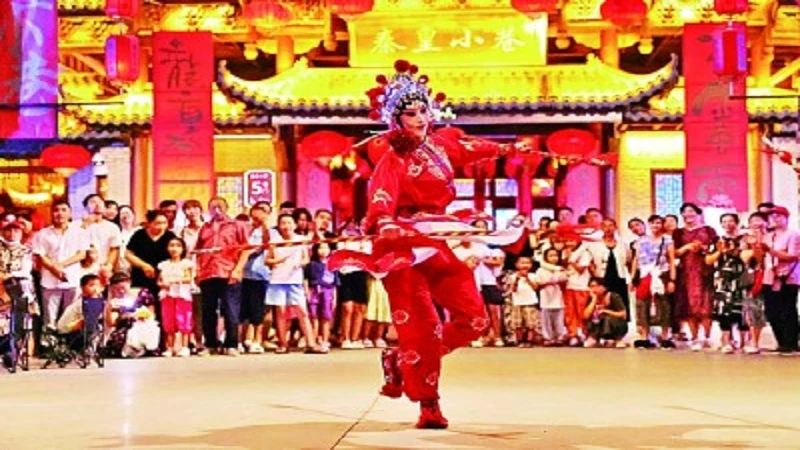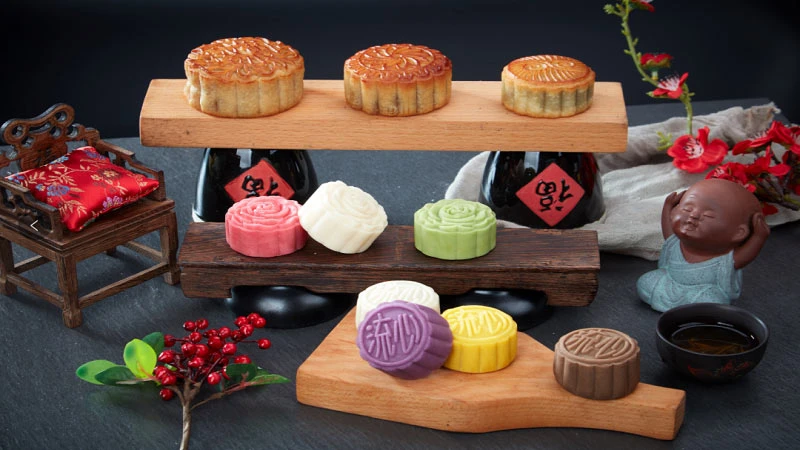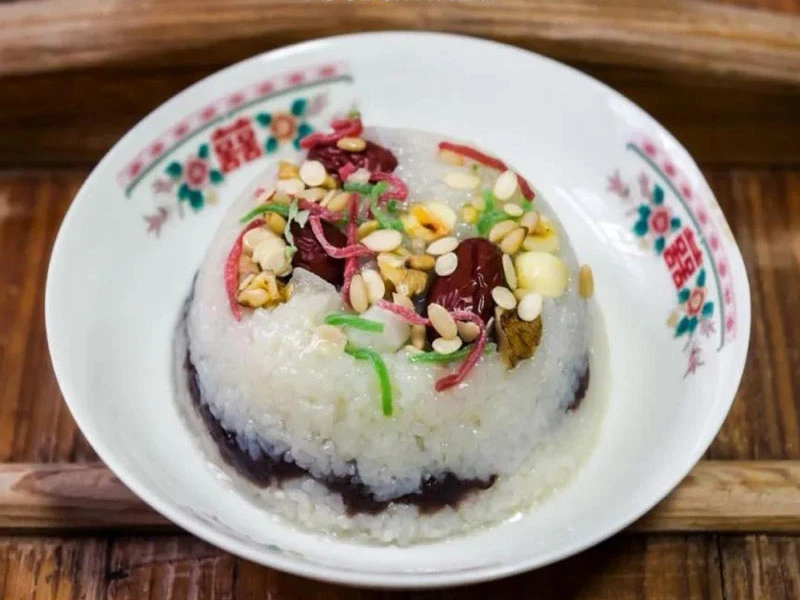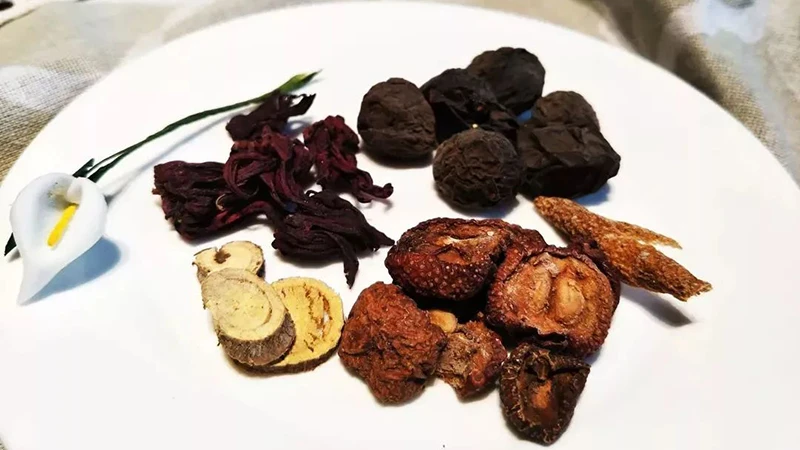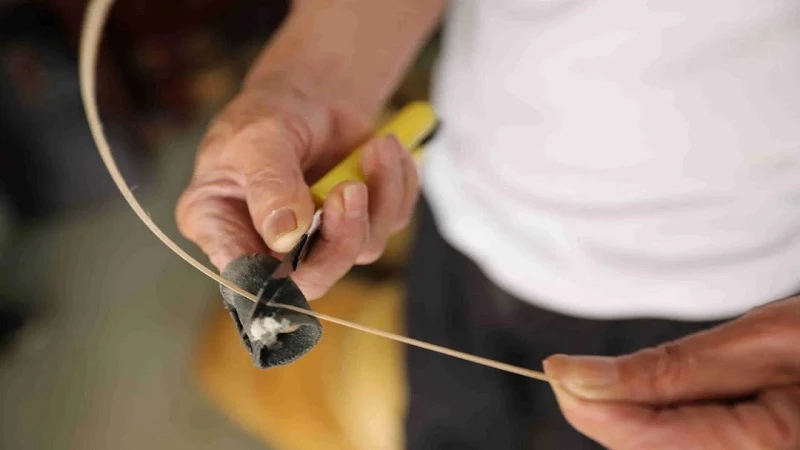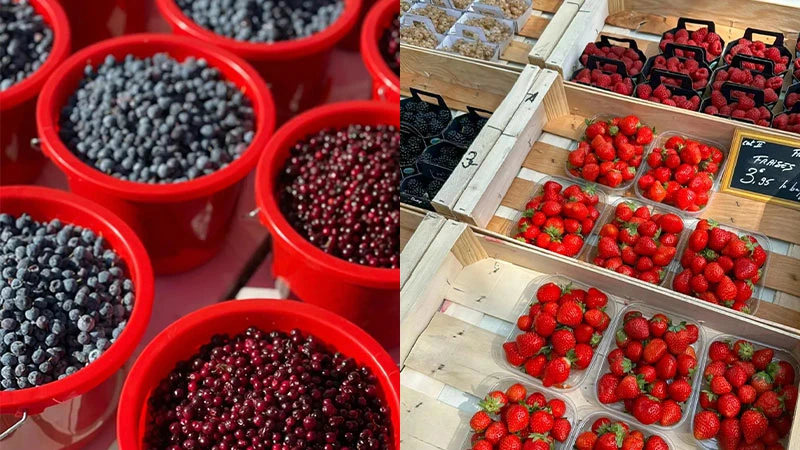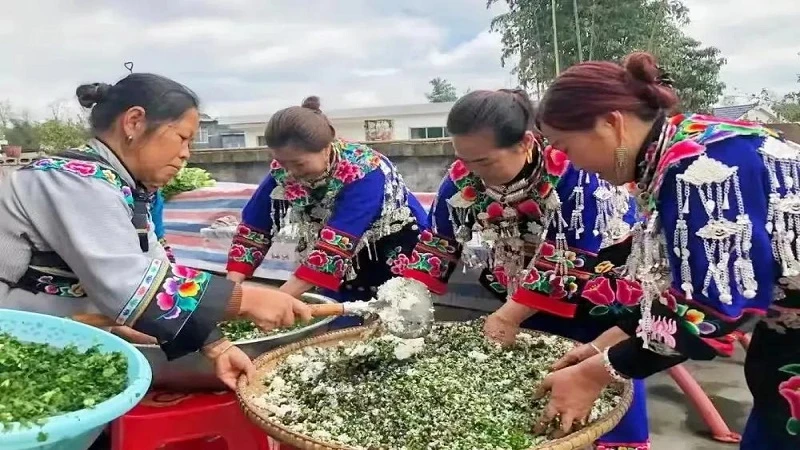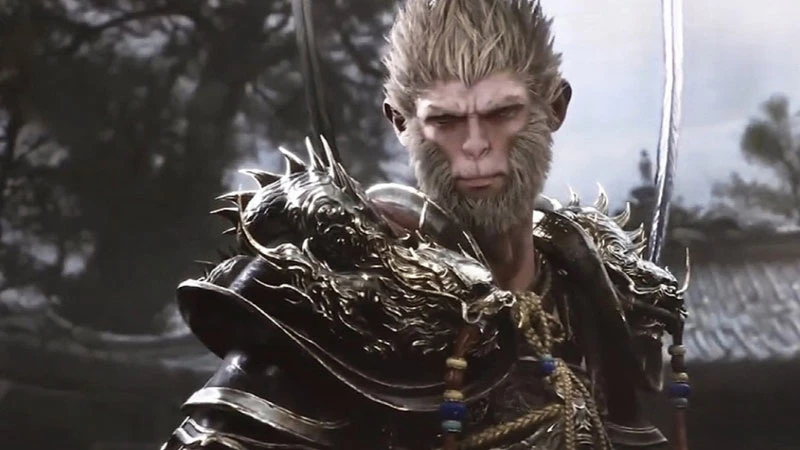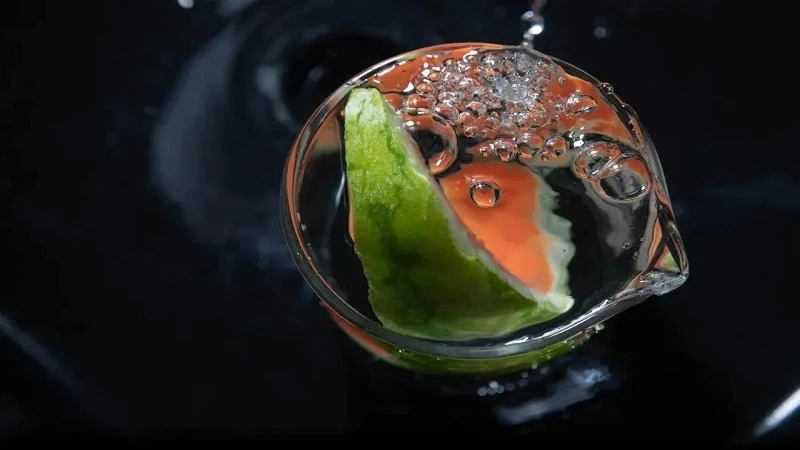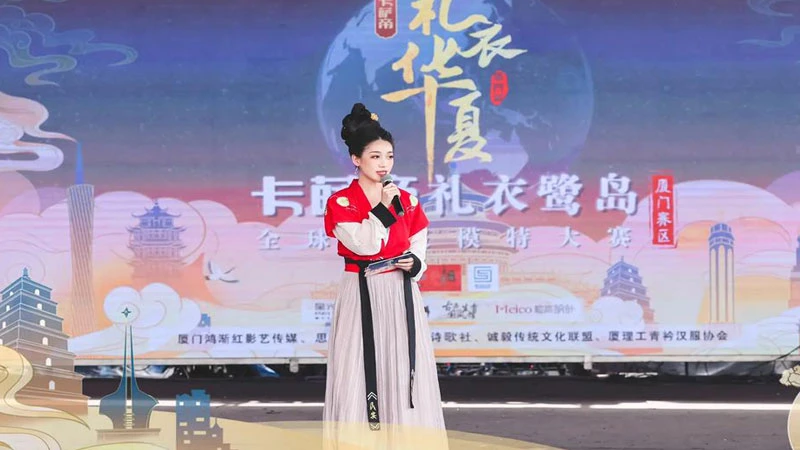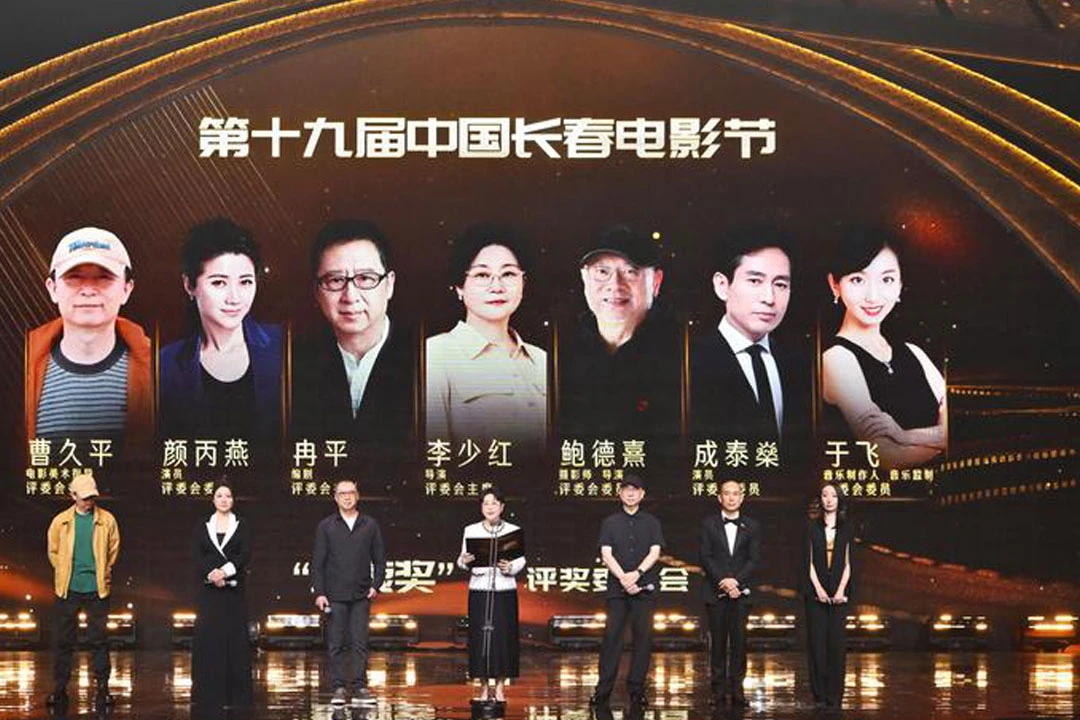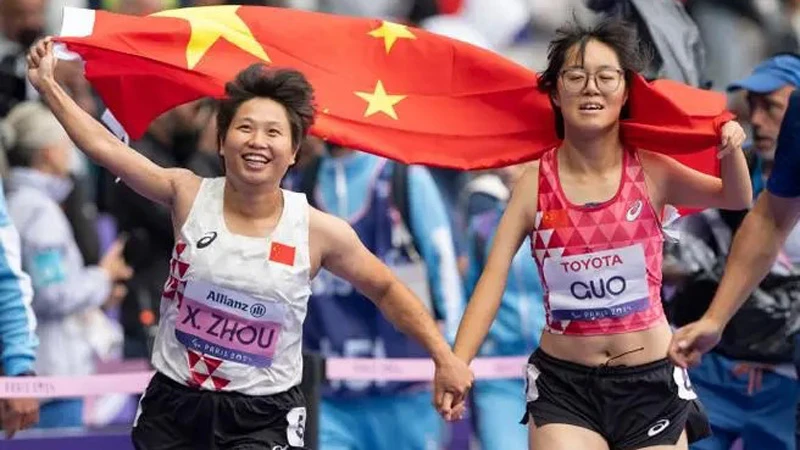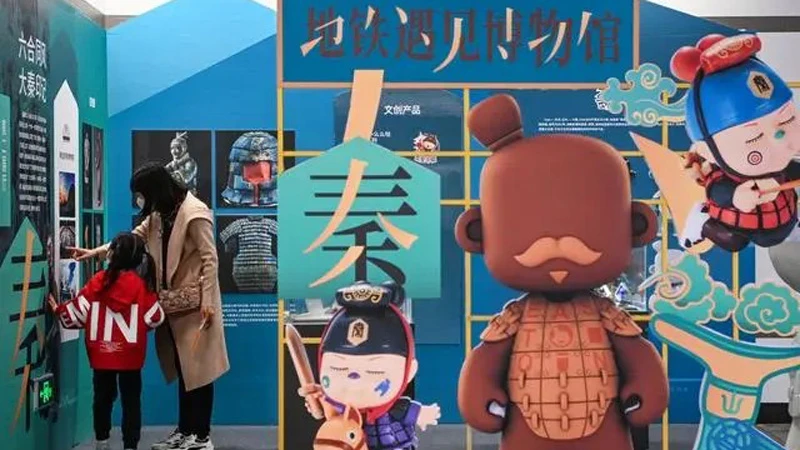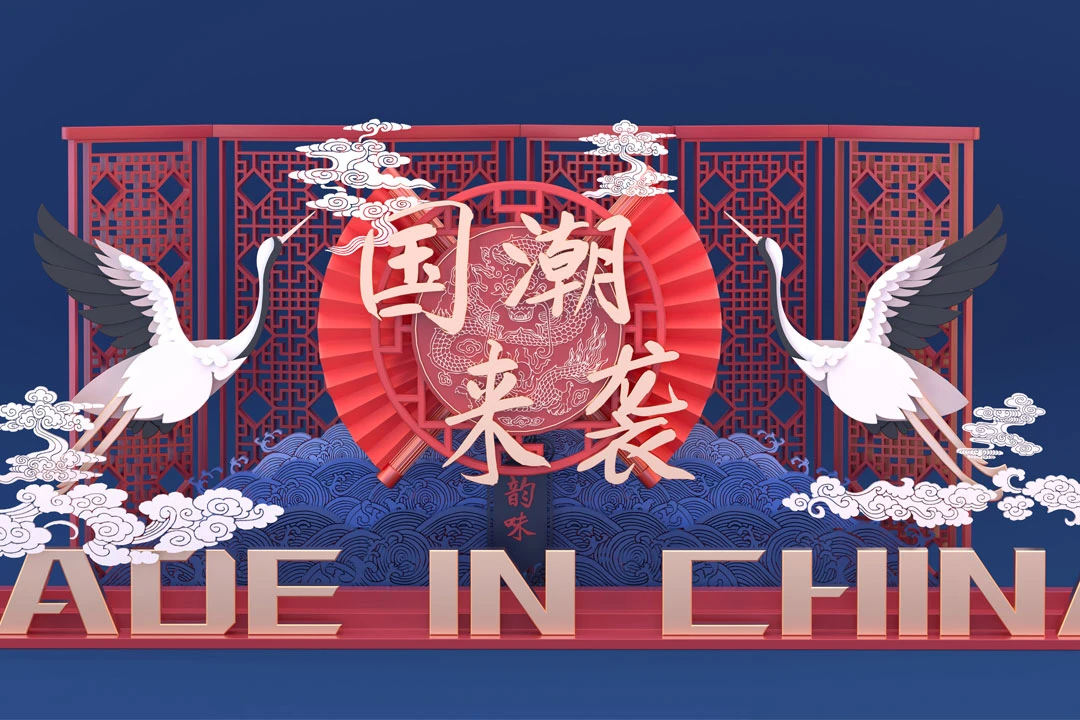Article
搜索结果:
-
How Chinese Opera is Captivating a New Generation
As traditional Chinese opera grapples with modern trends, it has found a way to bridge the gap between its rich heritage and the tastes of younger audiences. By incorporating innovative elements, Chinese opera is evolving, creating immersive experiences and shedding its "niche" image. The success of productions like The New Dragon Gate Inn (龙门客栈) demonstrates how this transformation is attracting new viewers and helping the art form break free from its historical confines. New Adaptations, New Fans In recent years, Chinese opera troupes have started embracing fresh ideas. Productions such as The New Dragon Gate Inn, a reimagined version of a beloved classic, have successfully integrated contemporary storytelling techniques. The incorporation of interactive elements and modern stage designs has attracted a growing audience, including those previously unfamiliar with opera. One key element of this reinvention is the concept of "immersive theater," where audiences are not merely passive observers but become part of the experience. The play’s lead actress, Xie Jianghui, fondly recalls her first performance in The New Dragon Gate Inn, noting how close she felt to the audience. “I could see their expressions up close, which made the experience nerve-wracking yet exhilarating," she says. Despite the team's uncertainty about… -
A Festive Mid-Autumn Celebration Beyond the Moon
The Mid-Autumn Festival is often synonymous with moon-gazing, family gatherings, and mooncakes. However, in ancient times, this festival was far more than just an evening dedicated to the moon. What if the skies were overcast, and the full moon hidden? How did the people of the past still manage to celebrate? Even in the absence of a visible moon, their festivities were rich and varied, showcasing traditions and customs beyond simply admiring the celestial body. Moonless Festivities: Celebrating Togetherness A traditional painting from the Qing Dynasty, titled The Auspicious Mid-Autumn (中秋佳瑞图), provides a glimpse into how ancient people celebrated this festival. Interestingly, the moon is not depicted in the artwork, yet the scene is filled with symbols of unity and joy. Fruits such as pomegranates, melons, and lotus roots are prominently featured, representing family harmony and prosperity. Even in the absence of the moon, people would gather to enjoy each other’s company, marking the occasion with wishes for happiness, fertility, and abundance. The essence of the festival lay not only in viewing the moon but in its deeper cultural significance, centered around family reunions and expressions of good fortune. The “Four Auspicious Trees” – the parasol tree and osmanthus tree,… -
The Change of Green-red Julienned Orange Peel
Mid-Autumn Festival is just around the corner, and one can't help but wonder: will mooncakes still feature the once-iconic Green-red julienned orange peel (青红丝)? For many, this ingredient evokes memories of traditional pastries that, in the modern era, seem to be fading into obscurity. Green-red julienned orange peel , once an essential garnish in mooncakes, is a mix of thinly sliced candied peels—green from spinach or herbs, red from red yeast rice or dyes. Its earliest documented use dates back to the Qing Dynasty, mentioned in records of Shandong's farming activities. Descriptions of traditional mooncakes included a variety of nuts, seeds, and, crucially, these vibrant candied peels. By the time of the Republic of China, regional records across the country consistently included this ingredient in local pastries. Whether it's the "sugar oil flatbread" of Shaanxi, filled with red sugar and green silk, or the "Baozi cakes" of Shandong, a crunchy sweet made from rice flour and layered with sugar and candied peels, Green-red julienned orange peel adorned all kinds of desserts. The brightly colored garnish was a symbol of festivity and sweetness, making its appearance in everything from celebratory feasts to daily treats. Going even further back in history, references… -
How Herbal Drinks Are Winning Over Young Consumers
The Surge of Herbal Drinks: A New Favorite Who could have predicted that a simple concoction of sour plum, lotus leaves, and hawthorn could become one of the hottest beverages this summer? But that's precisely what's happening as traditional herbal drinks, like sour plum soup, have taken over as the go-to drink for young Chinese consumers. The demand is so intense that Zhejiang Provincial Hospital of Traditional Chinese Medicine recently sold over a million packets of sour plum tea in just 24 hours, even crashing their servers from the overwhelming volume of orders. At the heart of this trend are health-conscious young people, especially those in their twenties and thirties, who have moved from skeptical to fully embracing the concept of "new traditional wellness." One such individual, a 29-year-old woman from Hangzhou named Qianyun (倩云), finally received her much-anticipated sour plum tea after weeks of trying. "It's a bit sour, but I hope it helps me lose weight," she shared, reflecting a broader sentiment driving this newfound enthusiasm for herbal remedies. Why Young People Are Turning to Herbal Teas Herbal tea has become more than just a drink; it’s now a lifestyle statement. This particular wellness trend focuses on age-old… -
Weaving the Cultural Heritage: Bamboo and Straw Weaving in Sanzao
In today's fast-paced world, many traditional arts are fading into obscurity, replaced by modern innovations. Yet, some artisans remain committed to preserving their craft, ensuring that it survives for future generations. One such individual is Tang Hejia (汤何佳), a 73-year-old master of bamboo and straw weaving, who has devoted his life to the preservation and promotion of this time-honored art. In the small town of Sanzao, Guangdong, Tang Hejia's hands bring bamboo and straw to life, weaving not only practical items but also the dreams of cultural heritage. The Legacy of Bamboo and Straw Weaving in Sanzao For many, memories of childhood include simple bamboo baskets or trays, common household items in rural China. However, in Sanzao (三灶), this weaving tradition has taken on a special significance. Known as the Sanzao Bamboo and Straw Weaving Technique (三灶竹草编织技艺), this craft was officially recognized in 2015 as part of Guangdong's intangible cultural heritage. This honor not only acknowledges the artistry involved but also ensures its preservation for future generations. Bamboo and straw weaving in Sanzao is much more than a craft; it is an embodiment of the region's agricultural and marine cultures. The products, such as crab skeleton baskets, flower trays, and… -
Treasures of the Backyard: Northeast Berries
While on a recent business trip to France, a friend of mine stumbled upon a fascinating discovery: the northern Chinese city of Qiqihar and Paris share a similar latitude. What intrigued her even more was seeing the streets of Paris lined with vibrant, colorful berries that looked exactly like the ones she grew up with in her family garden back in northeast China. In the photo she sent me, she stood in front of a fruit stall, surrounded by red, blue, and pink berries, her face lit with excitement and nostalgia. I instantly recognized the familiar varieties: raspberries, blueberries, and gooseberries. I joked, "You've traveled halfway across the world, but it looks like you're still in our old Northeast!" Northeast China, or "Dongbei," isn't often associated with berries, yet summer in this region is full of these juicy fruits. In local markets, you'll find raspberries, blueberries, and gooseberries, along with native fruits like watermelon, honeydew, and plums. However, for the local adults who grew up in Dongbei, these berries evoke memories of childhood rather than modern-day indulgences. For many, they are reminiscent of a time long past when these fruits were more than just food—they were treasures to be discovered.… -
Rediscovering Matcha: From Ancient China to Modern Guizhou
Matcha, a vibrant green powder made from finely ground tea leaves, has long been a popular flavor in drinks and desserts around the world. Its history, however, is rooted in China, where tea has been a cornerstone of the culture for millennia. Surprisingly, modern-day matcha doesn't come from China's more famous tea regions like Fujian or Zhejiang, but from a small town nestled deep in the mountains of Guizhou Province—Tongren (铜仁). Tea's journey in China began as far back as the mythological era of Shennong, when tea leaves were initially used as food or medicine. It wasn't until the Wei and Jin dynasties that the practice of grinding tea into powder began to take shape. Even then, tea was often brewed with various herbs and spices, and the tea powder itself was considered more of an additive than a central component of the drink. The true turning point came during the Tang dynasty with the arrival of Lu Yu, known as the "Tea Sage." Lu Yu's disdain for the overly complicated tea brewing methods of his time led him to develop a more refined approach to tea preparation. He wrote the Classic of Tea, the first comprehensive book on tea… -
The Art of Mini-Masterpieces: Animation's Pivotal Role in Gaming
How Animated Shorts are Elevating Video Game Narratives In the ever-evolving landscape of video game development, a new trend is emerging that blends the immersive world of gaming with the artistic finesse of animation. This fusion is perfectly exemplified in the recent release of "Black Myth: Wukong," (黑神话:悟空) a highly anticipated Chinese game that has captivated players not just with its gameplay, but with its series of animated short films that punctuate the gaming experience. These animated interludes, six in total, have become a talking point among gamers and animation enthusiasts alike. Each short film, crafted in a distinct style ranging from traditional 2D hand-drawn animation to stop-motion and ink-wash painting, serves to enrich the game's narrative while showcasing the diverse talents of China's animation industry. The culmination of this artistic endeavor is "Unfinished," the hidden ending animation that has left players both satisfied and intrigued. Created through a collaboration of renowned Chinese animation studios including Wolf Smoke Studio, Fantasy Animation, Jinghuatang, and Maidong Pictures, "Unfinished" is a testament to the power of collective creativity in the animation field. The production of "Unfinished" began in May 2023, making it the last of the six animated shorts to enter production. Despite the tight… -
Innovative Membranes Inspired by Watermelon Rind in Ion Transport Technology
In the race toward improving renewable energy technologies, researchers constantly seek innovative materials that can increase efficiency while reducing costs. Sometimes, nature provides the most unexpected sources of inspiration. One such example is a recent breakthrough by a research team at Westlake University, led by Professor Sun Licheng. They developed a new ion transport membrane (ITM) based on the unique properties of watermelon rind. What began as a serendipitous discovery during a late-night experiment has now evolved into a promising solution for various energy conversion systems, including fuel cells and electrochemical carbon dioxide (CO₂) reduction reactions. This development highlights how natural materials can offer fresh approaches to solving complex technological challenges. A Serendipitous Discovery The journey toward this discovery started in 2021 with a surprising observation in the lab. During a long work session, researchers Liu Qinglu and Dr. Tang Tang, members of Professor Sun's team, placed a watermelon in a freezer for a quick snack break. Days later, when they retrieved the watermelon from the freezer, they noticed that the rind had naturally separated from the fruit in the form of a thin, transparent membrane upon thawing. This seemingly trivial observation triggered a creative hypothesis: could the watermelon rind… -
Nature's Symphony: The Evolving Harmony of China's National Parks
Qinghai's Natural Treasures: A Canvas for Ecological Civilization In the vast expanse of China's western frontier, where the sky meets the earth in a tapestry of untamed beauty, a quiet revolution is unfolding. The province of Qinghai, home to some of the country's most breathtaking landscapes, has become the stage for an ambitious experiment in conservation and sustainable development. This experiment, embodied in the creation and management of national parks, is not just reshaping the physical landscape but also redefining the relationship between humans and nature. The recent premiere of the documentary series "Qinghai: Our National Parks (Season 2)" (青海·我们的国家公园(第二季)) has brought this transformation into sharp focus, offering viewers a window into a world where ancient philosophies and cutting-edge conservation practices converge. As the cameras pan across the shimmering surface of Qinghai Lake, sweep over the rugged peaks of the Kunlun Mountains, and linger on the diverse ecosystems of the Qilian Mountains, they capture more than just stunning visuals. They document a living testament to China's commitment to ecological civilization, a concept that has moved from political rhetoric to tangible reality in these protected spaces. The documentary's approach, described by some critics as "tranquil," marks a departure from the high-drama narratives often… -
The Resurgence of Tradition: When Ancient Meets Modern
Hanfu Revival: Fashion's New Frontier In the bustling heart of Xiamen, a city known for its blend of modernity and tradition, an extraordinary event has unfolded that captures the imagination of both young and old. The Xiamen International Fashion Week, traditionally a showcase of contemporary designs, took an unexpected turn this year with the inclusion of a Hanfu modeling competition that has set the fashion world abuzz. The "Celebrate Poetry and Wine Festival • Clothing of China Xiamen Station" event, held at the prestigious Wanyue City, wasn't just another stop on the fashion circuit. It represented a bold statement about the resurgence of traditional Chinese culture in the modern world. As models glided down the runway in meticulously crafted Hanfu – the traditional attire of the Han Chinese – onlookers were transported through centuries of Chinese history, witnessing the evolution of style from the dignified simplicity of the Han dynasty to the opulent grandeur of the Tang. What makes this event truly remarkable is not just the beautiful clothing on display, but the way it has captured the zeitgeist of a new generation of Chinese youth. In recent years, there has been a growing movement among young Chinese to reconnect… -
How One City is Reshaping its Future
A Metropolis Reborn: The Cultural Revolution of Changchun In the heart of a bustling nation, a city once known for its industrial prowess is undergoing a dramatic transformation. Changchun (长春), with its rich history and vibrant community, is reimagining its future through the lens of cinema and cultural innovation. This renaissance isn't just about art; it's a carefully orchestrated symphony of economic development, urban planning, and creative expression that's setting a new standard for cities worldwide. The catalyst for this change came in the form of the 19th Annual Changchun Film Festival, an event that has grown from a modest local celebration to a beacon for filmmakers and culture enthusiasts across the globe. But this year's festival was different. As the credits rolled on the silver screen, the real drama was unfolding behind the scenes, where city officials and industry moguls were laying the groundwork for a cultural revolution. At the heart of this transformation is the ambitious "Cinema City" project, a comprehensive plan to position Changchun as the nation's premier hub for film production and creative arts. The cornerstone of this initiative is the relocation of the legendary Spring Film Group's headquarters to the newly christened Changchun International Film City. This move isn't… -
A Journey to the East: 10,000-Kilometer Bicycle Adventure
From Amsterdam to Shanghai: A Ride Across Continents Most travelers heading from Amsterdam to Shanghai would simply book a flight, endure the long haul, and arrive in a matter of hours. But for Dutch historian, author, and urban design curator Ole Bouman, this journey needed to be more than just a change in geographical location—it was a quest for understanding. In February 2024, at over sixty years of age, Bouman mounted his bicycle in Amsterdam and set off on an extraordinary journey. Over the next 156 days, he crossed 18 countries and regions, cycling a staggering 10,756 kilometers to reach his destination: Shanghai. Carrying 45 kilograms of luggage on an 18-kilogram bicycle, he endured physical challenges, battled diverse climates, and pushed the limits of human endurance. But for Bouman, this wasn't just an adventure—it was a deeper exploration of culture, dialogue, and the search for peace. For over a decade, Bouman had flown between Europe and China, giving lectures, curating exhibitions, and working on urban design projects. However, despite his deep involvement with Chinese culture, he felt he had only skimmed the surface. So, instead of flying yet again, he chose a slower, more thoughtful approach—one that would allow him… -
The Timeless Love of Shandong for Their Giant Baozi
A Bite of Shandong: The World of Baozi In Shandong, the love for Baozi isn't just a culinary preference—it's a cultural phenomenon. Recently, the internet has been abuzz with playful jabs and fond reflections on Shandong people's obsession with these steamed buns. To the locals, the universe might be imagined as a giant Baozi, perfectly round, pleated, and filled with endless possibilities. For outsiders, their first encounter with Shandong Baozi can be quite the surprise. These buns are often significantly larger than those found elsewhere in China, embodying the robust and hearty spirit of the Shandong people. Each Baozi reflects the agricultural abundance, geographical characteristics, and cultural depth of the region. The Agricultural Backbone: Why Shandong Baozi Are So Big Shandong is one of China's agricultural powerhouses, especially when it comes to wheat production. The North China Plain, where Shandong is located, is a prime wheat-growing region, supplying the province with ample high-quality flour. This abundant resource has made wheat-based foods, like Baozi, a staple in Shandong's daily diet. But the size of Shandong Baozi isn't just about having plenty of flour. It also ties into the region's climate. Shandong's winters are long and harsh, requiring people to consume more… -
The True Spirit of the 2024 Paralympic Games
As the 2024 Paris Paralympic Games approaches, the International Paralympic Committee (IPC) has taken a bold stand alongside many Paralympians, asserting that these athletes are not mere "participants" but true "competitors." This message, spread widely across social media platforms, challenges a longstanding misconception about Paralympians. The world is invited to reconsider the language and attitude surrounding these extraordinary athletes, who are preparing not just to be present but to compete fiercely on the global stage. While discussions around marketing slogans for the Olympics were still echoing, the Paris 2024 Paralympic Games made a resounding statement that silenced many. These athletes are here to compete, not just to participate. A Parallel World of Athletic Excellence The Paralympic Games, running parallel to the Olympics, carry a deep and rich history that is often overlooked. The roots of these games stretch back to 1888 when the first sports club for people who are deaf or hard of hearing was established in Berlin. However, it wasn't until after World War II that sports for people with disabilities began to gain real momentum. Initially, these activities were primarily aimed at providing a platform for war veterans and civilians who had been injured to engage in… -
Every Effort Counts: Everyone Can Shine
The journey of Chinese athletes at the Paris Paralympic Games has been nothing short of inspiring. From Li Zhangyu's (李樟煜) incredible resilience in cycling to Wen Xiaoyan's (文晓燕) domination in the track events, the Chinese team has made a powerful mark on the Games. Leading both the gold and overall medal tables, with 24 golds, 19 silvers, and 8 bronzes as of September 1, they've showcased a level of determination that goes beyond medals. For these athletes, competing is about much more than just chasing victories. It is about proving that with unwavering effort, anyone can achieve greatness. Li Zhangyu, a four-time Paralympic champion, perfectly embodies this mindset. At 36, Li took the stage in Paris to win his sixth Paralympic gold medal in the C1—3 men's 1000-meter individual time trial. His confidence and calm demeanor captivated not only his fellow athletes but also the audience, and his triumphant smile radiated his passion for the sport. "Through sports, I've found my self-worth," he said, voicing a message of hope for all individuals with disabilities. His journey stands as a testament that hard work and dedication can transcend any barrier, echoing the sentiment that "as long as you give it your… -
Xi'an: A Cultural Wonderland Through the Eyes of Foreign Tourists
A Journey Beyond Expectations For many foreign tourists, the allure of Xi'an (西安) is undeniable. With its rich history as the ancient capital of 13 dynasties and home to iconic landmarks like the Terracotta Warriors, Xi'an has long been a bucket-list destination. However, for travelers like Malaysian blogger Guo Qing'en (郭憓恩), a recent trip to the city offered far more than she expected. Her two-day visit quickly turned into an unforgettable adventure, blending ancient heritage with modern experiences. "One moment I was standing before the awe-inspiring Terracotta Warriors (兵马俑), and the next, I was on the Xi'an City Wall, swaying to street music alongside locals," Guo shares with enthusiasm. The juxtaposition of historical landmarks with vibrant youth culture caught her by surprise. "You rarely see this kind of blend of the ancient and the contemporary in other countries," she says. For her, the experience was a powerful reminder that China's future is deeply intertwined with its past. Guo's experience isn't unique. Tourists from around the world are flocking to Xi'an, drawn by its promise of cultural richness and unexpected modern twists. As Xi'an continues to enhance its tourism offerings, foreign visitors are discovering more reasons to stay, explore, and fall… -
How Black Myth: Wukong is Revolutionizing Travel
The release of the groundbreaking game "Black Myth: Wukong," (黑神话:悟空) inspired by the classic Chinese novel"Journey to the West", has sparked a tourism boom in China. This innovative AAA game has not only captivated gamers worldwide but has also significantly boosted interest in the real-life locations depicted in its vast and enchanting world. On August 20, 2024, travel data highlighted an unprecedented surge in tourism to Shanxi Province, a key location featured in the game. According to Meituan, tourism interest in Shanxi's attractions spiked by 156% compared to the previous period. Ctrip reported a notable increase in searches for Shanxi's destinations, while Tuniu identified popular cities like Taiyuan, Datong, and Linfen as hotspots. Qu Naer highlighted top sites such as the Yungang Grottoes and Mount Wutai, indicating that "Black Myth: Wukong" is influencing travel decisions and directing tourists to these culturally rich sites. This game's success underscores a growing trend where cultural intellectual properties (IPs) are not only enhancing the gaming experience but also driving real-world tourism. Much like how the TV series"My Almaty" ignited interest in Xinjiang, It is making Shanxi's landmarks desirable travel destinations. The fusion of gaming with cultural tourism creates a powerful synergy, enriching both the gaming experience and real-life travel.… -
How China's Tech-Infused Cultural Renaissance is Shaping Global Trends
The fusion of traditional Chinese culture with cutting-edge technology has given birth to a phenomenon known as "Guochao" or "national trend." This movement is not just reshaping domestic consumer preferences but is increasingly making waves on the global stage. As China's cultural confidence grows, so does its ability to export its unique blend of heritage and innovation to the world. Guochao Goes Global: The Evolution of a Cultural Powerhouse The Guochao (国潮) movement has come a long way since its inception. What began as a resurgence of interest in traditional Chinese aesthetics has evolved into a sophisticated industry that leverages technology to create products and experiences that resonate with both domestic and international consumers. The upcoming Liangzhu (良渚) 2024 Tech Guochao Industry Conference, scheduled for October 17-20 in Hangzhou, stands as a testament to this evolution. Since its debut in 2021, the conference has been at the forefront of defining and redefining what Guochao means in the context of a rapidly changing global marketplace. The inaugural event introduced the concept of dual drivers - culture and technology - propelling the Guochao movement forward. Subsequent conferences expanded on this foundation, exploring themes such as the global potential of Chinese brands along the Belt and Road… -
Blending Ancient Artistry with Modern Beauty Innovation
The Rise of Guochao: How Florasis is Redefining Chinese Cosmetics In the ever-evolving world of cosmetics, a new player has emerged, capturing the essence of Chinese aesthetics and propelling it onto the global stage. Florasis, known as Huaxizi (花西子) in Chinese, is not just another makeup brand; it's a cultural ambassador, blending the rich tapestry of Chinese tradition with cutting-edge beauty technology. The brand's journey began in 2017 with a clear vision: to create makeup products that embody the spirit of "Eastern cosmetics, nourished by flowers." This philosophy set Florasis apart in a market saturated with Western beauty standards, carving out a unique niche that celebrates China's cultural heritage. As the "Guochao" (国潮) trend - a movement embracing Chinese cultural elements in modern products - gained momentum, many domestic brands rushed to incorporate traditional motifs into their designs. However, this approach often resulted in mixed reactions. The challenge lay in striking a delicate balance between honoring cultural roots and meeting contemporary aesthetic demands. Florasis, however, approached this challenge with a level of sophistication that has set new standards in the industry. The brand's recent "Embroidery Limited Edition" series exemplifies this approach. Launched during the Qixi Festival (Chinese Valentine's Day), this collection marks Florasis' first…
